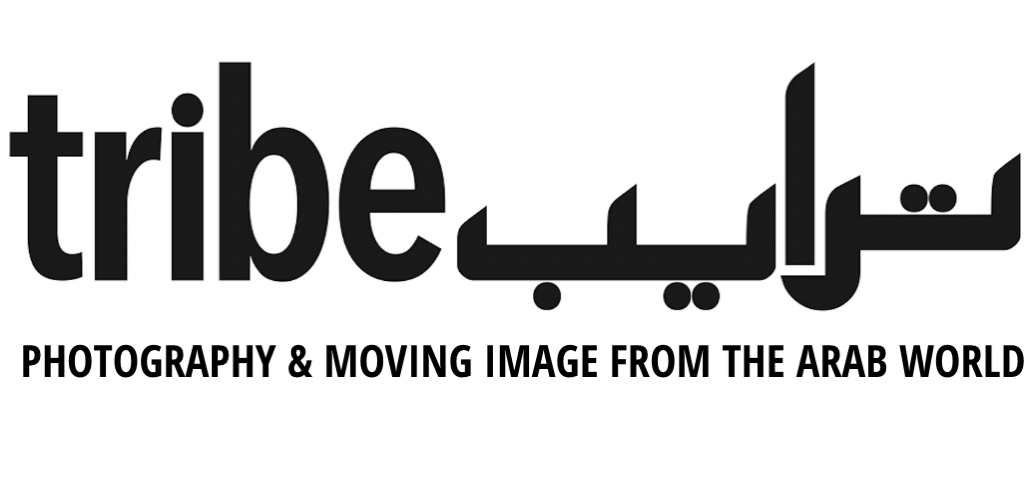Hazem Harb: New Histories
Collaging Palestine's past
Hazem Harb, Untitled #2, from the series Archaeology of Occupation (2015), Archival pigment print, mounted on 3mm aluminum composite, 172 x 120 cm. Courtesy of the artist and Tabari Artspace.
With text by Sandra S. Williams, curator.
By bringing the forgotten and marginalized to the fore, artists have the power to wrest the writing of history from the victors. Palestinian artist Hazem Harb is one such case. His photographic collages gather the fragments of Palestine's pre-Nakba history and reformulate them into works that explore memory, power, and heritage, to question who gets to write history, in what manner, and for whom. Harb, who was born in Gaza in 1980, trained in visual arts at IED Istituto Europeo di Design, Roma and stage at the Academy of Fine Arts of Rome, and considers himself a painter but has maintained a fascination with photography since childhood. Several years ago, he began to collect archival photographs of Palestine from the internet and private individuals but only started incorporating them in his art since 2015. Harb creates collages by cutting and layering the photographs, compositing them with his own drawings, opaque paper, plexiglass-glass, and other found materials - his method of reclaiming and reworking history.
Among the series Harb made in 2015 was Archeology of Occupation, where stark geometric shapes and concrete structures assert themselves over late 19th and early 20th century landscape photographs of Palestine. Portions of the bucolic scenes, once used to attract visitors to the Holy Land, are blocked and obliterated. The concrete forms, including security barriers and fragments of Brutalist architecture, tumble onto or else hover threateningly over towns and people. Harb's photo-collages can be read to reflect the disjunctive landscape of present-day Gaza and the West Bank, cut apart by politics and actual concrete. By creating elisions in the photographic records, Harb also points to gaps in historic narratives, particularly those written by hegemonic powers, where omissions and erasures facilitate a neat, sanitized state ideology.
Absence (of key details, of faces) and the presence (of concrete security walls, of technology) suspend Harb's collages outside of time, where we are never completely in the past or the present. In the TAG series (2015) Harb adds small square frames around people's faces and on buildings in archival photographs, referring to the photo tagging feature found on Facebook. The squares suggest these people and places are indetifiable but no names appear next to the boxes and instead they remain unknown. In their visibility, however, the loss of information seems to call for remedy and input. There is a suggestion that the data might one day be crowdsourced and filled in, the people tagged, known, and remembered, and that the present might salvage the past.
Harb returned to the participatory nature of history writing in his Power Does Not Defeat Memory series (2018). As with the Archaeology of Occupation, he again cuts and layers the photographs but here the colors and compositions are decisively more optimistic. He layers on brightly colored plexiglass-glass, tinting the audience's view of the past so that they might see boats on the Sea of Galilee or a woman in traditional Palestinian dress in a literal new light.
The glass has the added effect of reflecting back the viewer, making us a part of the composition and collapsing time. Through this self-referential tactic, Harb draws his audience into his practice of rewriting history and enlivening memory. Such animating of the past reappears, in a different manner, in his series Reformulated Archaeology (2018), where he collages and draws on images of ancient artifacts, giving them a biomorphic appearance. The implication is that like cells or viruses, the historic fragments have the potential to evolve. In both series, Harb conveys that the past is not a fixed entity but one that continues to grow, develop, evolve and rewrite.
Evolution is fundamental to Harb's practice as an artist who works across several mediums. The geometric shapes that appear in paper and plexiglass throughout his collages derive from his earlier paintings such as the Al Baseera series in which he layered color and shapes in dynamic, constructivist-like compositions. Harb's multi-disciplinary practice allows him to select the medium that will best convey his concept and builds bridges between his various series. For example, in one image from the Archaeology of Occupation, a concrete barrier hovers just over the land, looking as though it is ready to settle down, poised to crush the man sitting in the field beneath it. While the man and barrier are suspended in perpetual and dreadful tension in Harb's collage, the full weight of the concrete is captured in his sculpture In Transit, in which three slabs of concrete are strapped to, and therefore, crushing a mattress. The horror foreshadowed in the collage manifests in the sculpture, each conceptually reinforcing the other.
By refashioning and recasting the physical photograph, Harb highlights the medium as a malleable and potentially faulty reminder of the past and, more broadly, the imperfect nature of memory itself. He questions the process of recording history by exposing the ways in which it can be manipulated and encourages us to participate in its reworking by reflecting out images in his work. Through the many media he interweaves, Harb conveys the complexities of memory and longing that define the intractable state of Palestinians without resorting to overwrought symbolism. In doing so, Harb opens the work up to deeper reflections on the very nature of remembering, power, and politics of space.


